2002 Corvair College
Corvair College 2002
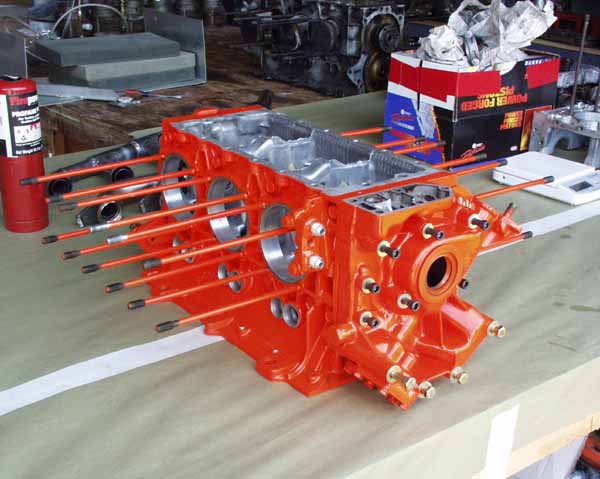
Steve Makish from Boca Raton was one of the first to show up, bringing this freshly painted (Chevrolet orange) case as the starting point for a new 2700cc engine for his KR2S. He's going to put this one together and get his KR flying while he works out the bugs in his 3100cc Big Boy version.
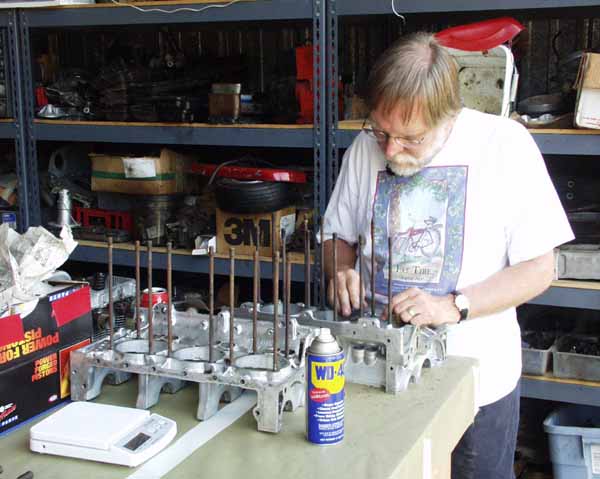
Paul Zimmerman brought everything he needed to build a 2700cc Vair too.
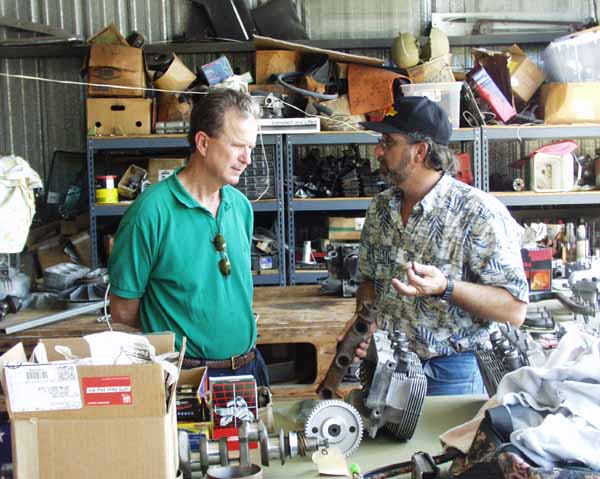
Paul Harris and Pat Panzera discuss some of the finer details of the stock exhaust log.
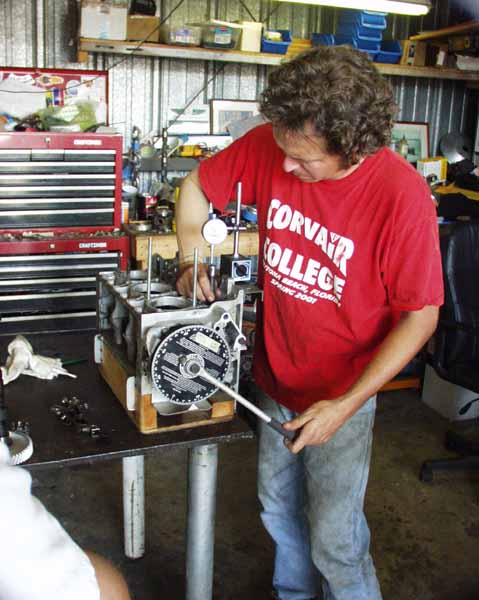
William checks out Steve's OT-10 cam timing.
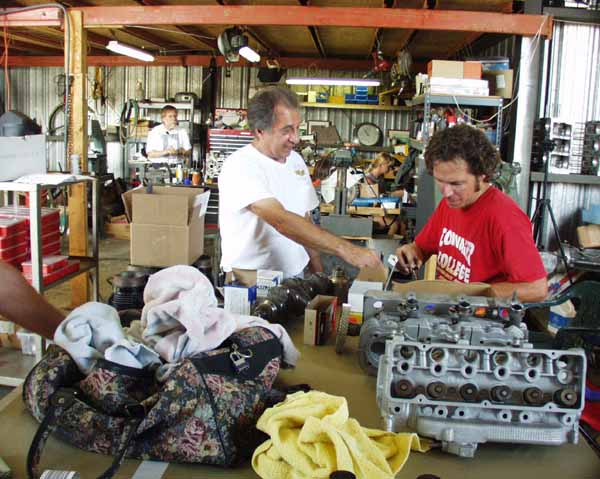
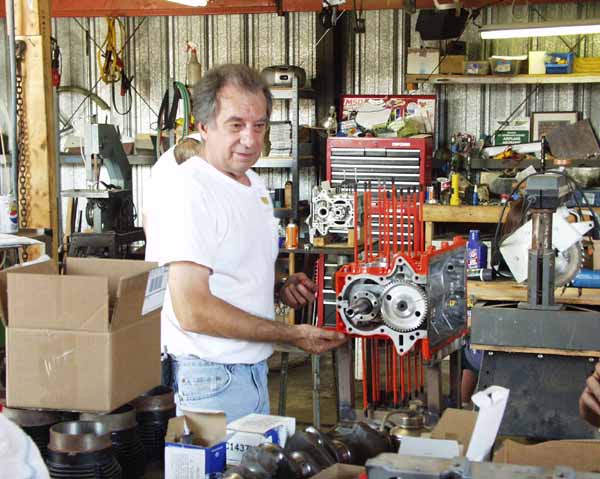
It's coming together now.
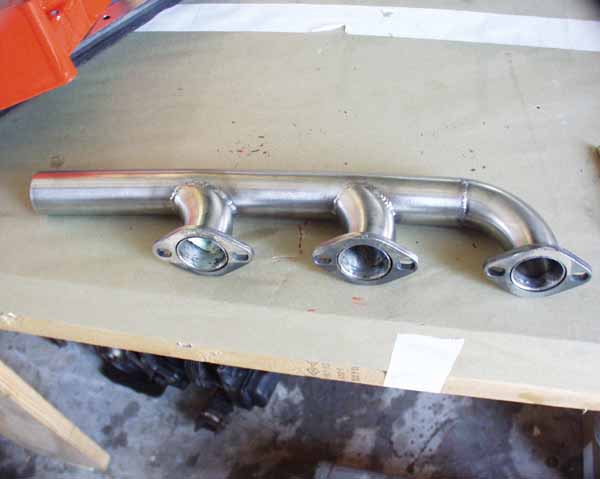
Here's a stainless exhaust header that Terry Bailey
welded up for WW's 3100cc engine with Bob's flanged exhaust setup. He might make you one for $500, which is not a bad price for stainless aircraft exhaust system. I think $400 will get you the mild steel version for regular exhaust stubs, but check with him on that.
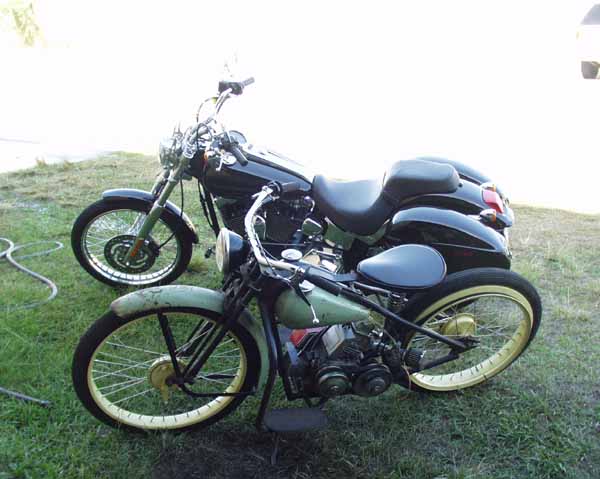
Here's WW's "Simplex", hotrodded with a 5.5 HP lawnmower engine, of course. Note bizarre centrifugal clutch and belt drive around perimeter of rear wheel. Kevin's MowerCycle was looking really good too, but was in an area too dark to get a good picture of. It now sports composite fenders and gas tank, as well as a little chrome stuff here and there. For those who missed it, the MowerCycle is a sort of chopper/springer minibike with a powerplant consisting of two lawnmower engines welded into a V!
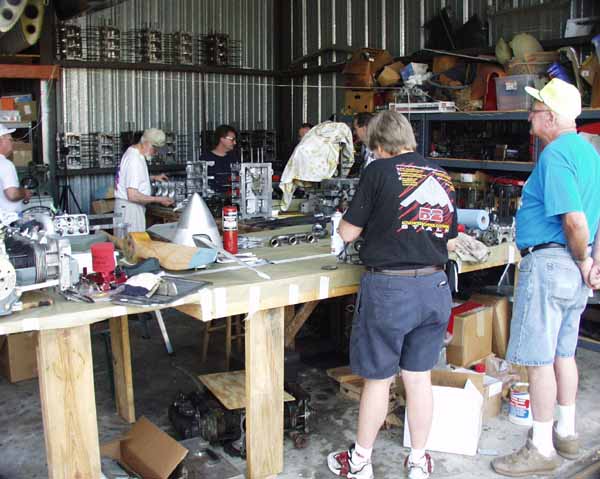
Busy place, the Covair College!
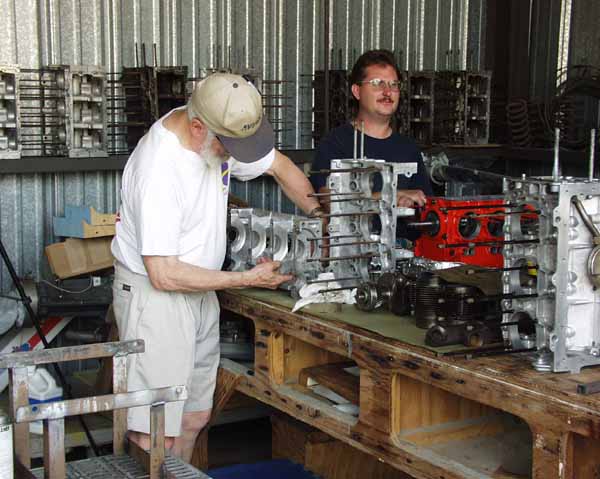
Doc Mosher works on his case, with Bill Clapp in background.
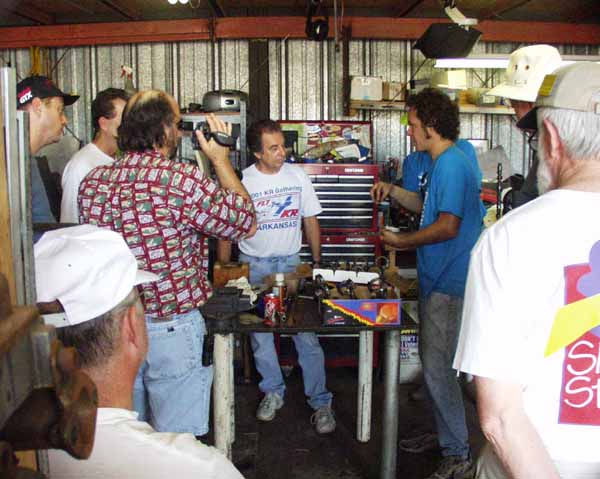
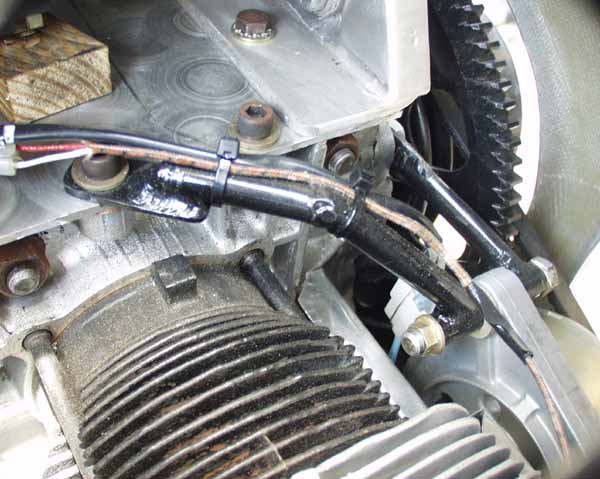
Neat little alternator bracket on Gary Coppen's engine.
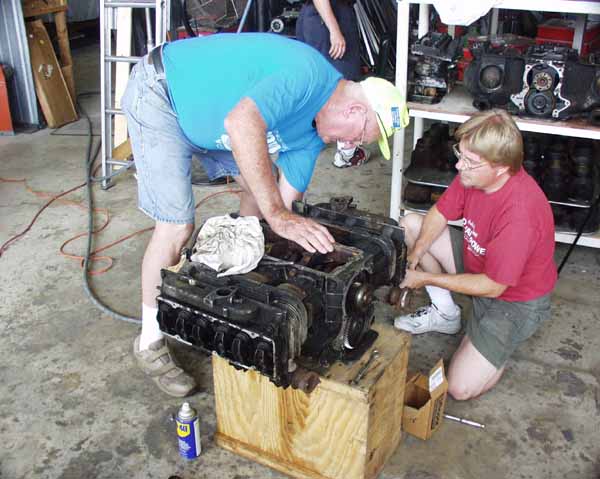
Merrill (of video production fame) helps tear down another one, for lack of anything better to do.
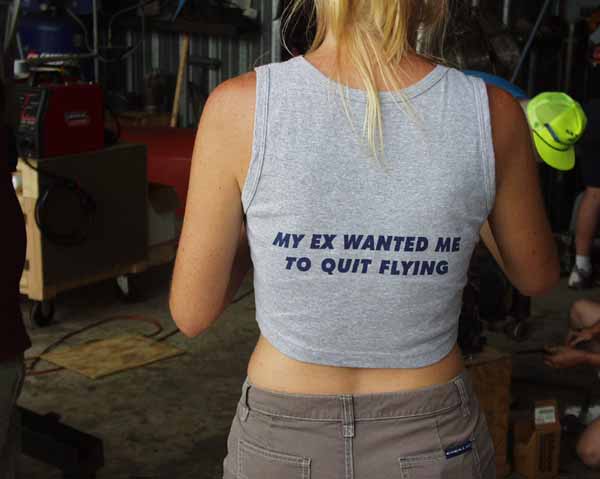
Grace's shirt says it all!
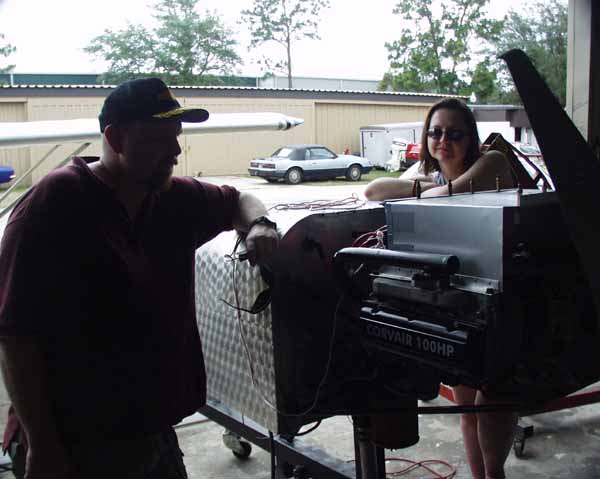
A&P Gus built the sheet metal cooling shroud for the prop thrust test runs. He and Brigette drove all the way down from the frozen North just to help others out at the Corvair College. He's also the guy behind all the CC T-shirts.
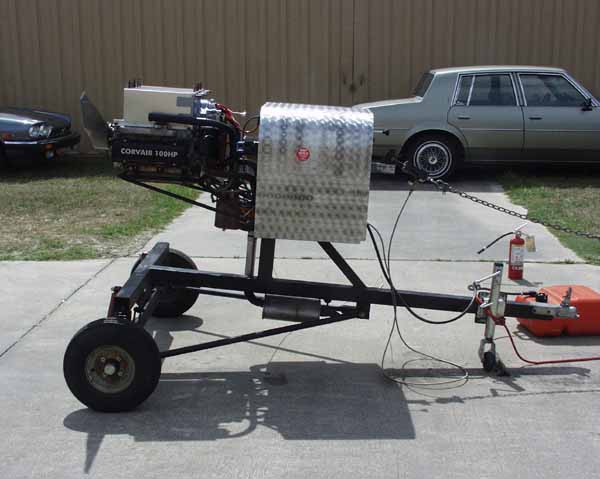
Since Dave's engine was already on the test stand, we ran several tests with various props on it, using a hydraulic cylinder as the measurement device. It was calibrated the night before with known weights. Several of us who knew our weights hung on it and the pressure readings were noted, (plus or minus 12 or 24 ounces), and the conversion factor was averaged between us, yielding a conversion factor of 1.54.
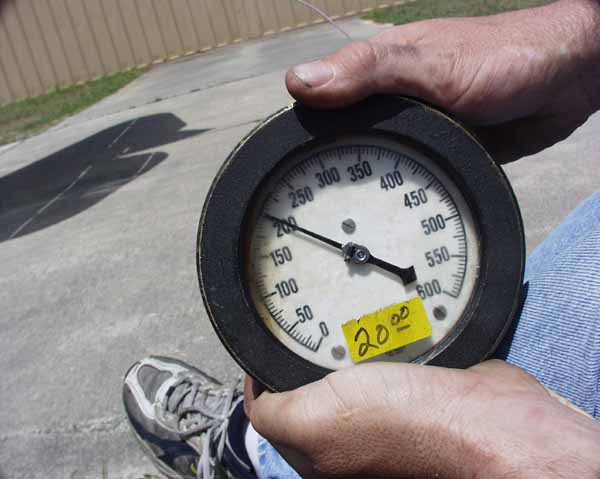
No expense was spared in the collection of data. Although perhaps not as accurate as the time tested "two guys holding back a van on one side of a speed bump" method, it will perhaps offer some relative means of comparison.
Before it was over, we'd tested several prop combinations on the test stand, and in Gary Coppen's Sky Coupe. Keep in mind that those on the test stand were done without the benefit of a smooth cowling behind the prop to direct the airflow. The prop blast was impinging on a bluff firewall and the large sheet metal cooling-air scoop, so these numbers will certainly be lower than you would find on a real aircraft. And no spinner was used for any of these tests. The low thrust numbers of the higher pitched props was caused by the blades being stalled while static testing. If the plane were travelling at 150 mph the blades are not stalled and the thrust will be much higher, so these numbers really don't tell us much.
Dave's 2700cc engine with 10 hours on it (the SNF show piece) turned a 62x58 Sterba @2650 rpm pulling 246 foot pounds of thrust (run on the test stand).
Gary's Sky Coupe with 2 blade 64" Warp Drive @2850 pulled 308 lbs of thrust. Blade angle was not noted.
Dave's 2700cc engine turned a 52x50 Prince P-tip 3100 rpm and provided 204 pounds of thrust. This same prop came off of a 2100cc Revmaster Turbo that would turn it at 3200 rpm at 165 mph.
Gary's Sky Coupe with 3 blade 55" Warp Drive @3400 rpm developed 270 pounds of thrust with blades at 17.5 degrees measured about a third of the way from the tip and 262 pounds of thrust @3200 at 24 degree blade angle.
My 3100cc engine (with less than an hour on it) turned Steve's Makish's 52x66 Prince P-tip 2800 rpm and developed 229 pounds of thrust. William is confident that it will later turn 3000 or so. I think Steve said that his KR will turn it at 2950 rpm at cruise.
My 3100cc engine also turned the 62x58 Sterba prop mentioned above at 2800 rpm, a 150 rpm increase over Dave's 2700cc engine's performance, but only got 229 pounds of thrust, an indication of stalled blades, I presume.
My 3100cc engine turned a 58x74 Aymar Demuth prop at 2650 rpm and yielded 216 pounds of thrust (stalled blades, for sure).
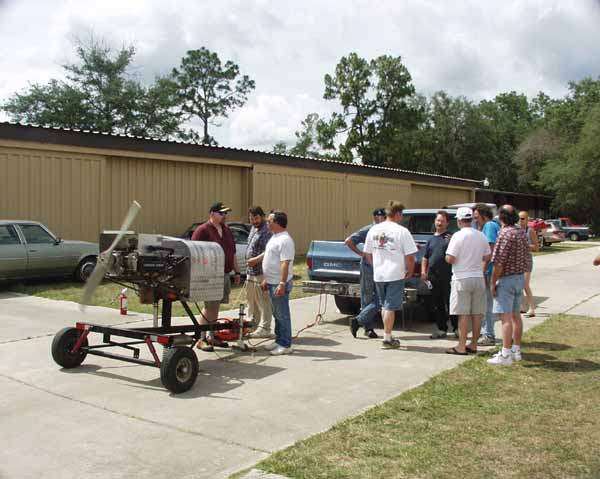
Here's a Prince P-tip being tested.
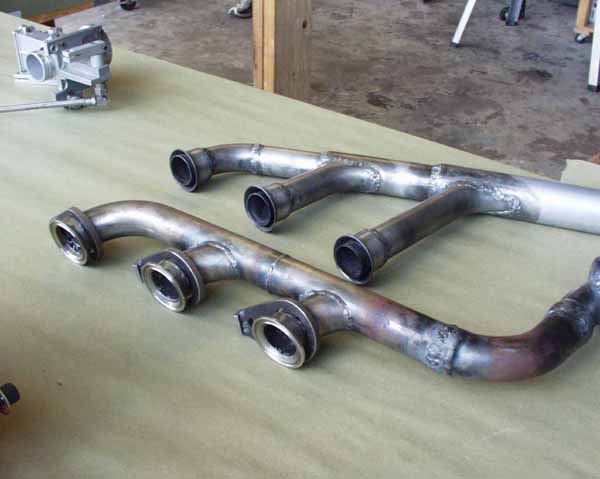
Here's Pat's exhaust header (top) and one of Terry Bailey's mild tubing headers (he didn't do the welds on the right end) for comparison.
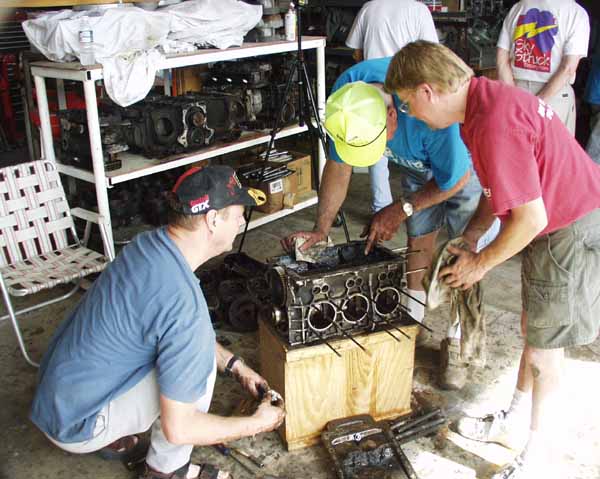
Here's another one coming apart.
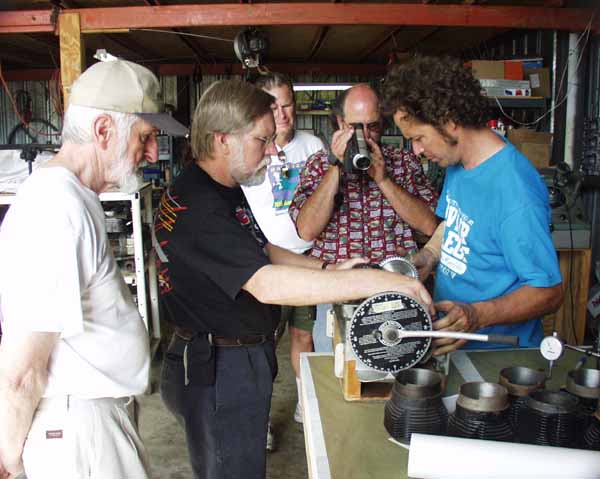
Paul's cam gets the third degree.
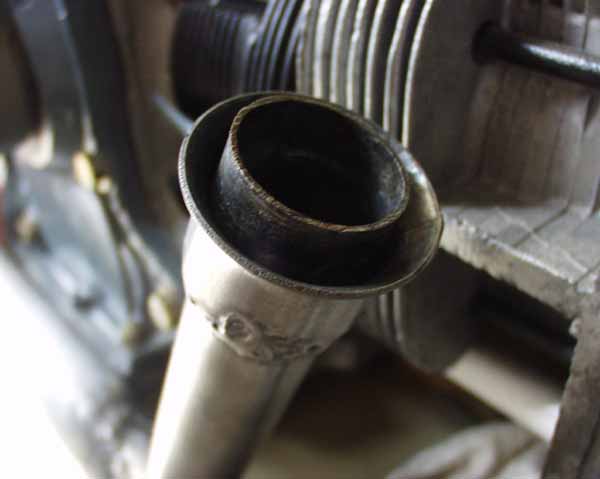
A closeup of Pat's flange. It's just a belled out flange welded to the basic tube.
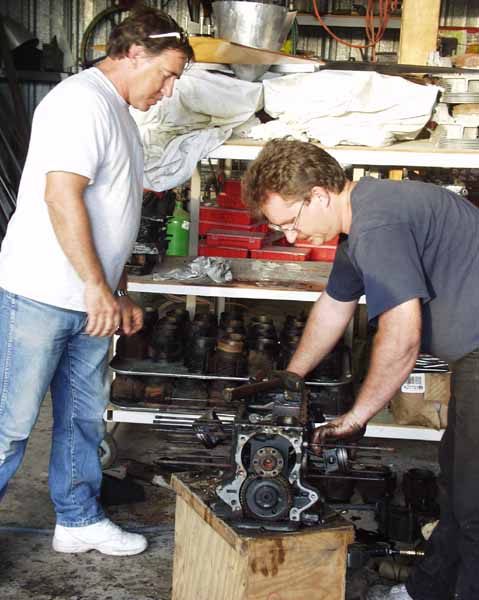
Bill took this one apart to discover that the top of one piston was beat to pieces, the result of a "re-ring" job without removing the upper ridge of the cylinder wall.
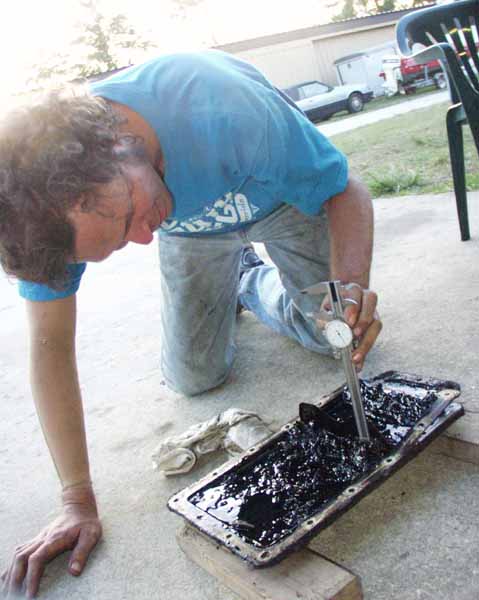
The resulting pile of crud in the pan was 1.356" deep, on average.
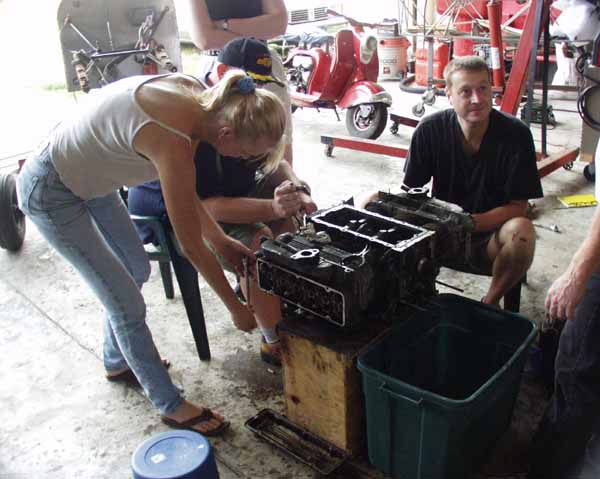
I'll bet you wish your girlfriend would help you tear down your engine, don't you?
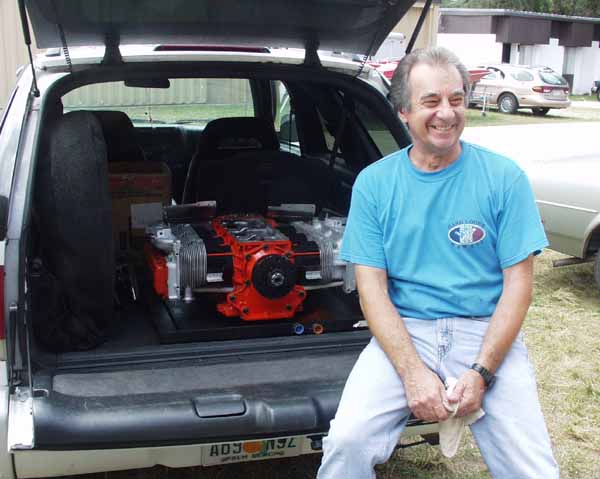
Steve completely finished his 2700cc engine, and was headed back to install it.
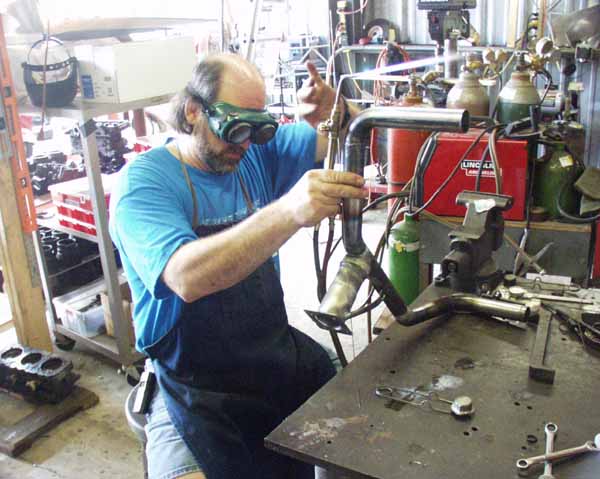
Time was running out to test my engine on the stand, so Pat volunteered to craft an entire inake manifold from thin air for me. I wouldn't have been able to test it without him! After getting everything all mounted on the test stand and filled it with oil, I found the oil pickup tube still lying on the table. At that point I earned a reputation as being a "quitter", since I was ready to just call it quits and put it back in the car and go home. An hour later we had it ready to go again, so I'm glad they talked me out of it.
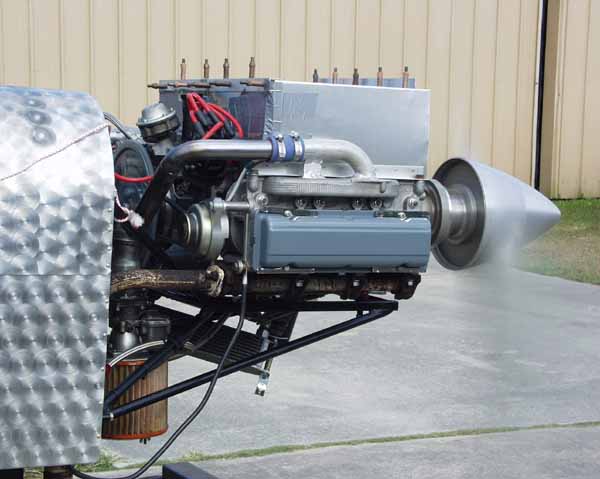
Here's my engine on the test stand, using an A-65 Stromberg carb with the "small" venturi. It will certainly do better with a larger carb. Initial starts were unsucessful, until we figured out that I'd somehow managed to put the distributor in 180 degrees out, despite knowing better. Bob Lester kept telling me to check that, but I just KNEW I'd done it correctly! I also pirated an AirCamper manifold from William since it had the venting ports welded to it, and just used a flat aluminum plate for the top since I hadn't welded up my vented top yet.
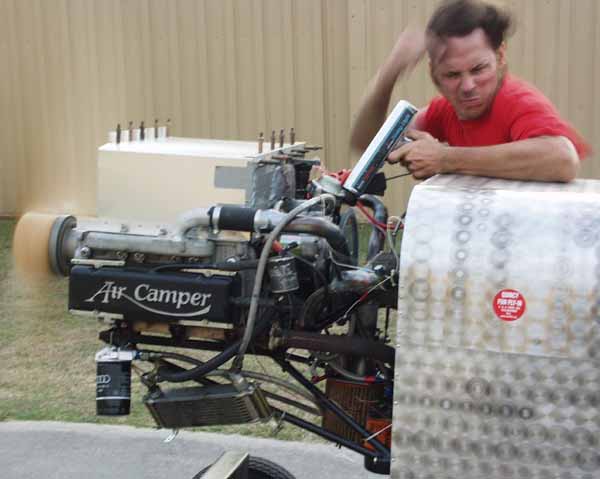
Here's WW setting the timing, after he discovered that the timing marks on the Dale's balancer are backwards! Apparently there's a "reverse rotation" version, which explains why I started it initially with 20 degrees retarded, rather than 10 degrees advanced initial timing. The propblast was brutal!
When my engine was first started, it didn't run very smoothly and four of the 6 lifters took forever to get pumped up and quiet down. I was somewhat unimpressed in the beginning, but after about half an hour at 1500-2000 rpm all of the lifters quieted down and it started running smoothly. Toward the end it would idle at 500 rpm, and started and stopped instantly. It was (and still is) a tight engine, and anybody that turned that prop would laugh at the prospect of it windmilling in flight. It has 8.4 to one compression ratio, and was run on a mixture of 100LL and 93 octane auto fuel. There was never any indication of detonation, although before the timing was set it "dieseled" once upon shutdown (the timing was retarded roughly 20 degrees before we discovered the mismarked balancer!).
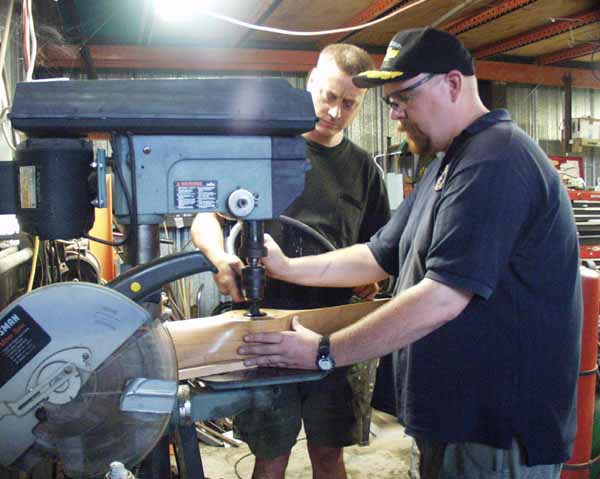
I also brought an Aymar Demuth 58x74 prop, which Gus is shown clearancing the hub for the prop flange. I called them last year and asked if this prop might work on a Vair. "There's no way a Corvair engine is going to turn THAT beast", I was told. The last test of the night was this prop on my 3100cc engine, turning 2650 rpm statically, considerably better than an 0-200 could do that job! I can't wait to call them back and brag about that.
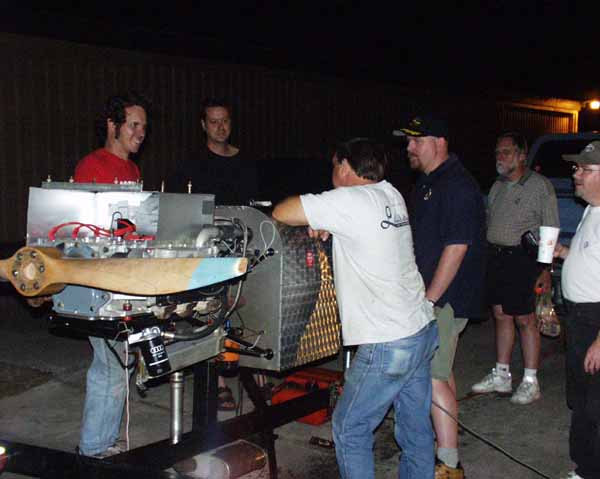
The diehards hung around for this final test at about 10 o'clock. The engine came off the stand and back into the trunk of my car, still warm, so I could drive all night back to Alabama. I had to be home to watch the kids when my wife left for work at 8:30 AM.
Corvair College 2002 was a smashing sucess! We tested some props on various engines and I got mine broken in, ready to install. Some of these results are apples and oranges (and even a few grapes), but I think it was helpful, and if nothing else, exciting! Many thanks to William for pulling off another great one, and to everybody that helped make my engine sucess happen, especially William, Pat Panzera, and Gus. I think everybody in the place helped me out at some point. Several engines were brought in pieces and left very close to ready to run.
I'll see y'all next year, when I FLY to Corvair College 2003!!!!!
Return to Mark Langford's Corvair engine page






























